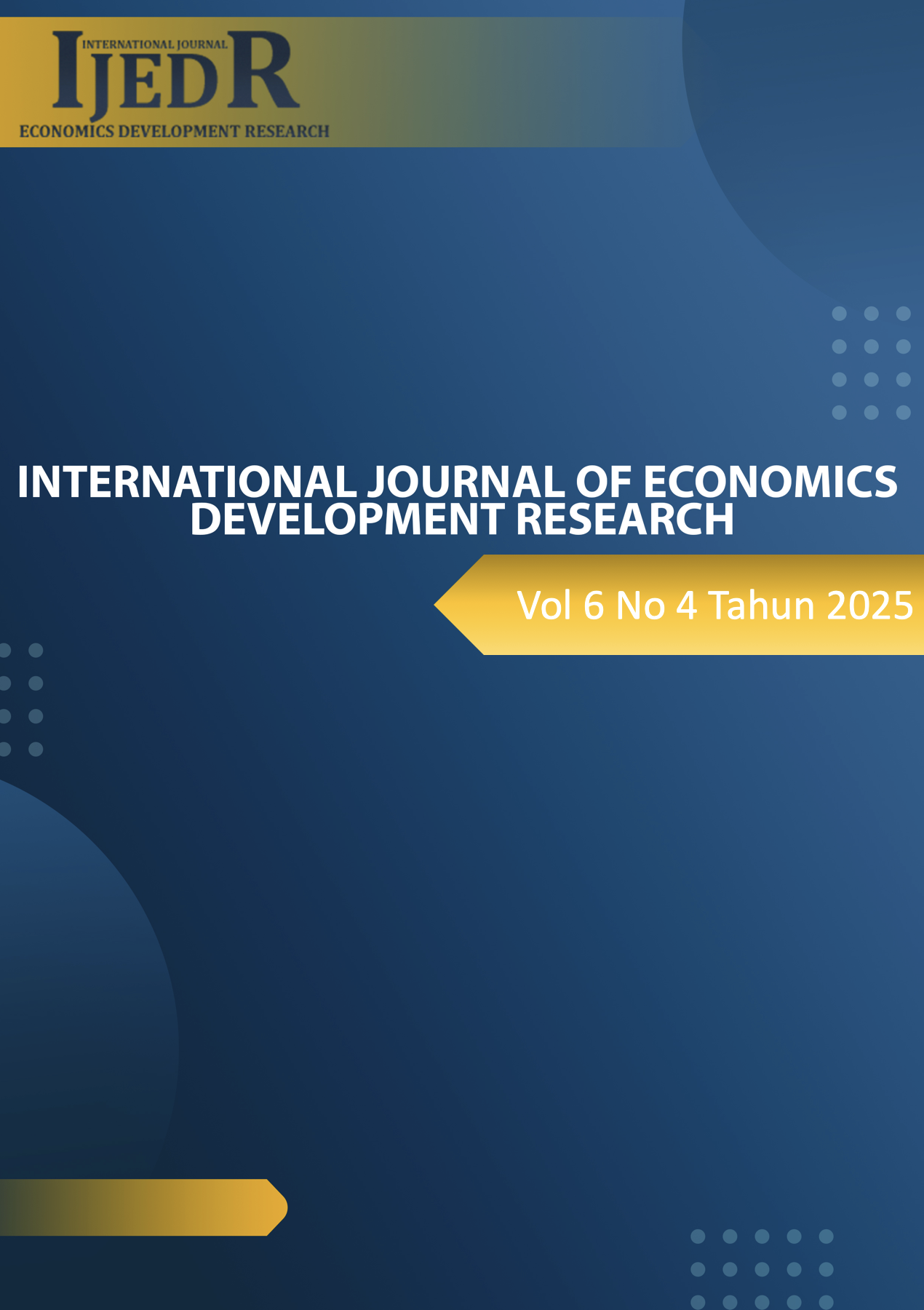Danantara, the SOE Superholding, and the Pillar of Indonesia’s Economic Future?
DOI:
https://doi.org/10.37385/ijedr.v6i4.8201Keywords:
Danantara, Superholding, SOE Reform, Hybrid Holding, GRC, Public Sector Governance, State-Owned Assets, Good Corporate Governance, Institutional Reform, Sustainable DevelopmentAbstract
The establishment of Danantara, Indonesia’s state-owned superholding, represents a major milestone in public sector governance and economic transformation. With assets exceeding IDR 14,700 trillion, Danantara is designed to enhance the efficiency, competitiveness, and strategic asset management of state-owned enterprises (SOEs). By centralizing SOE governance under a unified entity, the government aims to foster operational synergies, improve financial performance, and attract foreign investment. This qualitative case study compares superholding models from Singapore, Malaysia, and Germany to identify the most appropriate framework for Indonesia. The findings suggest that a Hybrid Holding model—anchored in Governance, Risk, and Compliance (GRC) principles—offers the optimal balance between managerial autonomy and state oversight. This model integrates features of Investment Holding, Strategic Guidance Holding, and Strategic Control Holding, providing both decision-making flexibility and accountability to the state. Effective implementation of GRC strengthens transparency, risk mitigation, and regulatory compliance, all of which are critical to Danantara’s long-term success. Despite its promise, Danantara faces several challenges, including political interference, legal ambiguity, and limited institutional capacity. Nonetheless, with comprehensive structural reforms, robust governance mechanisms, and consistent policy direction, Danantara holds the potential to become a transformative force in SOE restructuring—driving sustainable economic development, industrial advancement, and global competitiveness for Indonesia.
References
Adebayo, A. (2025). Conceptualising (corporate) governance in state-owned enterprises: A research agenda. International Journal of Organizational Analysis.
Aguilar, O., & Biondi, J.-E. (2016). Three steps to sustainable and scalable change. Deloitte Development LLC.
Aivazian, V. A., Ge, Y., & Qiu, J. (2005). The impact of leverage on firm investment: Canadian evidence. Journal of Corporate Finance, 11(1–2), 277–291.
Bougie, R., & Sekaran, U. (2019). Research methods for business: A skill building approach (8th ed.). John Wiley & Sons.
Chung, K. H., Elder, J., & Kim, J.-C. (2010). Corporate governance and liquidity. Journal of Financial and Quantitative Analysis, 45(2), 265–291.
Claessens, S., Djankov, S., & Lang, L. H. P. (2000). The separation of ownership and control in East Asian corporations. Journal of Financial Economics, 58(1–2), 81–112. https://doi.org/10.1016/S0304-405X(00)00067-2
Habir, M. T. (2021). Indonesia’s first sovereign wealth fund (INA): Opportunities and challenges. ISEAS Yusof Ishak Institute.
Kaptein, M. (2008). Developing and testing a measure for the ethical culture of organizations: The corporate ethical virtues model. Journal of Organizational Behavior, 29(7), 923–947.
Kementerian Badan Usaha Milik Negara. (2023). Peraturan Menteri Badan Usaha Milik Negara Nomor PER-2/MBU/03/2023 tentang pedoman tata kelola dan kegiatan korporasi signifikan badan usaha milik negara (PER-2/MBU/03/2023). https://www.peraturan.go.id
Megginson, W. L., & Netter, J. M. (2001). From state to market: A survey of empirical studies on privatization. Journal of Economic Literature, 39(2), 321–389.
Michaud, R. O., & Ma, T. (2001). Efficient asset management: A practical guide to stock portfolio optimization and asset allocation. The Review of Financial Studies, 14(3), 901–904.
Moynihan, B., & Schwab, K. (2020). Measuring stakeholder capitalism: Towards common metrics and consistent reporting of sustainable value creation.
Nabilla, & Suherman. (2024). Tata kelola BUMN berdasarkan prinsip good corporate governance. Jurnal Kertha Semaya, 12(2), 207–225. https://doi.org/10.24843/KS.2024.v12.i02.p16
Nachrawi, G. (2021). BUMN sebagai usaha pemerintah menuju kesejahteraan rakyat: Tinjauan filosofis, sosiologis, politis dan yuridis. CV Cendekia Press.
OECD. (2017). The size and sectoral distribution of state-owned enterprises.
OECD. (2023). G20/OECD principles of corporate governance 2023.
Park, C.-A. (2021). Enhancing the transparency and accountability of state-owned enterprises. In Reforming state-owned enterprises in Asia (pp. 21–39). Springer.
Prag, A., Röttgers, D., & Scherrer, I. (2018). State-owned enterprises and the low-carbon transition (OECD Environment Working Papers No. 129). OECD. https://doi.org/10.1787/06ff826b-en
Rangasamy, S., Rajamohan, K., Janardhanan, A. K., & Manu, K. S. (2023). The role of financial analytics in decision-making for better firm performance. In Analytics enabled decision making (pp. 136–169). Springer Nature Singapore.
Siahaan, M., Suharman, H., Fitrijanti, T., & Umar, H. (2022). Will the integrated GRC implementation be effective against corruption? Journal of Financial Crime, 30(1), 24–34.
Stiglitz, J. E. (2017). Globalization and its discontents revisited: Anti-globalization in the era of Trump. W. W. Norton & Company.
Transparency International. (2024). Corruption perceptions index 2024.
Williamson, O. E. (2002). The theory of the firm as governance structure: From choice to contract. Journal of Economic Perspectives, 16(3), 171–195.
World Bank Publications. (2014). Corporate governance of state-owned enterprises: A toolkit. World Bank.
Yan, Y. (2020). Anti-corruption provisions in international investment agreements: Investor obligations, sustainability considerations, and symmetric balance. Journal of International Economic Law, 23(4), 989–1013.





